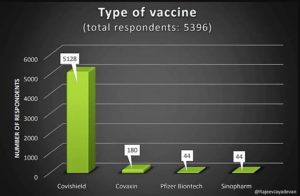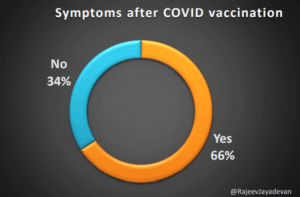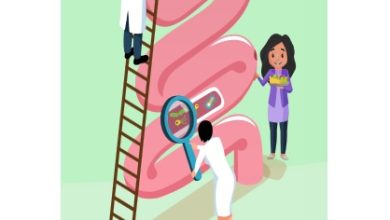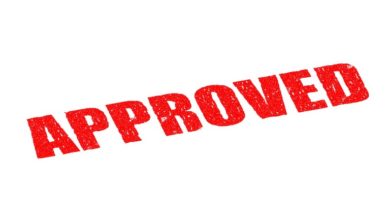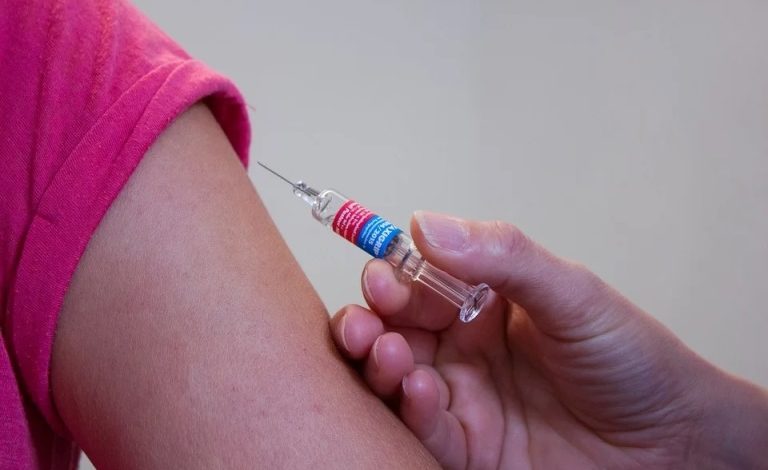
A total of 5396 healthcare workers were taken into account
Dr Rajeev Jayadevan, Consultant Gastroenterologist, Sunrise Hospital Cochin, Dr Ramesh Shenoy, Consultant, Lisie Hospital, Kochi and Anithadevi, biostatistician, Sunrise Hospital, Kochi, recently conducted an online survey on the immediate post-vaccination experience among 5396 healthcare workers. The survey was conducted over a one-week period from January 29 till February 4.
A majority of the doctors (85.8 per cent), followed by nurses (6.2 per cent), technicians (1.1 per cent) and others took part in the survey. This does not necessarily reflect the relative proportion of those who received the vaccine. 56 per cent of the respondents were male, 44 per cent were female. 5128 (95 per cent) of the respondents received Covishield (Astra-Oxford vaccine manufactured by Serum Institute, India), 180 (3.3 per cent) received Covaxin (Bharat Biotech, India), while 44 (0.8 per cent) each had received Pfizer-Biotech and Sinopharm vaccine from other nations. A majority (98.3%) of the respondents had received either Covaxin or Covishield.
Overall, 66 per cent of the respondents reported at least one post-vaccination symptom. Tiredness (45 per cent), myalgia (44 per cent), fever (34 per cent), headache (28 per cent), local pain at the injection site (27 per cent), joint pain (12 per cent), nausea (8 per cent) and diarrhoea (3 per cent) were the most prevalent symptoms. All other symptoms were 1 per cent or less.
According to the survey, none of the symptoms reported in the survey was serious or required hospitalisation.
947 out of the 5396 respondents were over the age of 60 and had no serious outcomes. In fact, the chance of having symptoms decreased with advancing age. Older people also had later onset of symptoms, occurring at an average of 13.4hours (70-79 years), compared to 10hours in younger age groups(20-29 years)following vaccination. (P<0.001)The duration of symptoms decreased with advancing age, ranging from an average of 28.8 hours in younger age groups(20-29 years) to 22.9 hours in older age groups (70-79 years)(P<0.001).
The symptoms more common among women. Post-vaccination, the symptoms were more likely to be reported by women (74.7 per cent) compared to men (58.6 per cent)(p<0.001), this observation was consistent across all age groups. Women were more likely to report symptoms severe enough to prevent working for a day (27 per cent vs. 15 per cent) and the need to take pain relievers (70 per cent vs. 51 per cent). Women developed symptoms slightly earlier (10 hours) than men (12 hours) (p<0.001). Women had a slightly longer duration of symptoms (30 hours vs. 28.5 hours, p= 0.01)
Protection from a vaccine becomes fully active only two weeks following the booster (second) dose. This study was done soon after the first dose, to look at immediate symptoms. Long-term efficacy can only be determined by careful long-term observation of groups of people who received the vaccine and comparing their disease rates with those who did not receive the vaccine.
Two-thirds of healthcare professionals who completed the survey reported mild and short-lived post-vaccination symptoms. Tiredness, myalgia (muscle pains)and fever were most commonly reported. These symptoms were consistent with an immune response commonly associated with vaccines and correlated with the findings from previously published phase 2/3 trials. In 90 per cent of the cases, the symptoms were either milder than expected or meeting the expectation of the vaccine recipient. No serious events were reported. Symptoms were more common among younger individuals. There was no difference in symptoms among those who had a past history of COVID-19.

